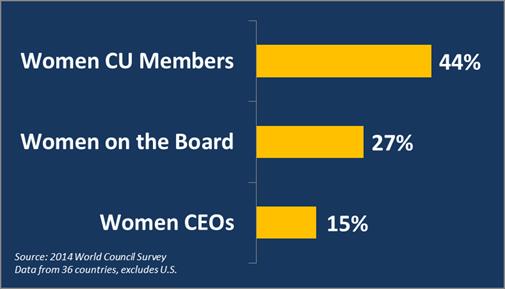Two authors look beyond the stereotypes to examine the research-based evidence about the leadership traits women possess. (Psst: They lead straight to success.)
Matty Stern/U.S. Embassy Tel Aviv
In the era of post-post-feminism, let's just admit it: Men and women are--or at least can be--different in certain ways. And some of those ways show up at the workplace. Some even show up in the C-suite. So, let's take the time to ponder how that, well, works.
To put it simply: Do women lead differently?
According to Sharon Hadary and Laura Henderson, the answer is an uniquivocal yes. What's more interesting, though, is that they believe that leadership by a woman tends to yield very desirable results--including better odds of business profitability and creation of more businesses that are fundamentally creative and innovative.
For two decades, Hadary, the founding executive director of the Center for Women's Business Research, and Henderson, founder of Prospect Associates, a $20-million health communications and biomedical research firm, have been conducting research on women in leadership roles. What they confirmed is that the women leaders with multi-million-dollar businesses combine their unique feminine leadership with sound business acumen to achieve their highest aspirations.
In their recent book, How Women Lead: The 8 Essential Strategies Successful Women Know, the authors also cite the latest academic research affirming that women's leadership styles are condusive to success. (For instance, MIT found that the most creative and productive groups included women. Also, Pepperdine University reported that businesses with more women in leadership reported higher financial results than those with fewer women leaders.)
Hadary and Henderson offer these success strategies for leaders who wish to maximize their strengths with solid business acumen to become a high-potential leader.
1. Own Your Destiny--and Judge Yourself Only by Your Own Metrics
One fascinating fact illuminated by this recent research is that women who achieve most are also women who define success in their own terms and integrate achieving high financial goals with creating a business that reflects their passions. Their businesses provide socially responsible products and services, offer opportunities for employees to thrive, make a positive difference in the community, and simultaneously create personal wealth for the owner.
Successful entrepreneurs establish high goals and when they achieve their goals, they move the bar even higher.
"Women should think of their businesses as a $1 million business from Day One," says Henderson. "This drives how they structure the business, the decisions they make, and the way they present themselves and the business."
2. Lead Like a Woman
Highly successful women are likely to build on their leadership strengths of collaboration, inclusion, and consultation. The result within a company is a culture where everyone's ideas and insights are heard and considered in making decisions and where people feel valued and, therefore, are committed to achieving organizational goals.
There's something else that seems to be specific to women's leadership styles: Women think more holistically. That means, when women view a situation, they have a tendency go beyond the specific facts and the numbers to take into account personnel and organization considerations. As a result, they identify opportunities, risks, and gaps that others often miss, strengthening their competitive edge.
3. Numbers Tell Stories. Become a Translator of These
Never undermine your credibility as a businesswoman by opening a discussion with a statement about your lack of business acumen. Learn about finance and speak about it in its own language. The women business owners and leaders with the largest, fastest-growing organizations produce more financial reports more frequently than those with slower growing businesses. They identify the key metrics that give them the insights they need and embrace financial knowledge as a major part of their strategic decision-making.
4. Build Exceptional Teams
Hire the best from the very beginning and avoid the common mistake of hiring executives from a large company. You need leaders who can work effectively in a fast-moving, entrepreneurial organization. These are people who have the ability to commit to a bigger cause and possess values congruent with yours, curiosity and critical thinking skills, common sense, people and relationship skills, risk taking skills, and respect, admiration, and tolerance for the entrepreneur. Hiring to these characteristics will result in a team that can identify and implement solutions to the evolving challenges of the entrepreneurial business.
5. Nurture Your Greatest Asset: You
Avoid becoming so caught up in your work you cannot see the world around you. Focus on integrating all aspects of your life and treat your time and energy as scarce resources--as scarce and valuable as any item in your budget. Establish priorities based on your values and goals and use them to make decisions about accepting requests for your time.
The most successful leaders are life-long learners. Set aside time to attend conferences and seminars, read, participate in networks that provide industry knowledge, and meet with experts. Don't forget to complement your professional networks with personal networks of friends, like-minded women, and colleagues who will share experiences and knowledge, support you in the tough times, and celebrate with you over successes.
6. Celebrate the Journey
Recognize that success is not a one-time shot. It is about composing a life over time. Take the time to enjoy the journey and celebrate the successes along the way.
Stay open to serendipity--the joys and opportunities that appear unexpectedly in life--whether at work or in your personal life. Beware of missing or dismissing these opportunities because you are so focused on your day-to-day plan. Be open to saying: "Yes, let's try it and see where it leads."----Marla Tabaka
To read the original article, click here.



